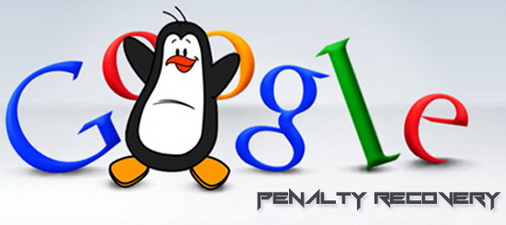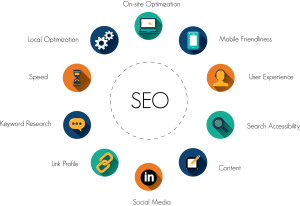Connect with us
Recent Posts
-
Recovering from a Google Penalty – Part II: The Solution(s)
In a previous posting, Recovering from a Google Penalty – Part I: Diagnosing the Problem(s), we outlined more than a dozen ways you can trigger a Google penalty or filter. Now we want to provide solutions you can use to fix the problems that resulted in your site being penalized. You can also use these recommendations to make sure your site is safe from a penalty if you have not already received one. The more proactive you are, the greater your chances of recovering your Page Rank and getting back on search engine results pages (SERPs).
Google’s Webmaster Guidelines is the top resource for recovering from a Google penalty since a penalty is basically a violation of a particular guideline. Another source to consider is Google’s terms of service. If you violate the service terms, you risk a penalty which could include your site being banned from the search engine. This means your web pages will not be included in search results. Specific steps to take to recover from a Google penalty include:
1. Replace duplicate content
Removing duplicate content should be fairly simple to do. If you are unsure what is duplicate content, use a content checker such as CopyScape. All you need to do is copy your URL into the CopyScape search bar. If there is duplicate content on your site, it will provide the exact location on your site. It will also let you know if any of your content has been copied from another site. Those are the content areas that must be rewritten. You can always hire a copywriter to help with this, preferably one with SEO content writing experience.
2. Fix keyword density and usage
You need to go through every page on your website and see how you are using keywords. This is best done in concert with your general content check. Anywhere you have a keyword that is in a grammatically-incorrect sentence, plan to rewrite that sentence. You also want to limit how frequently you use keywords. More is not necessarily better. In other words, using your keywords multiple times in the same sentence or in nearly every sentence is not natural. Write for your customer first – then think about the search engines.
3. Check site for proper optimization
With all of the talk about SEO, it seems counterintuitive to “de”-optimize your site. What you are really doing is making sure your site is legitimately optimized. Links are the biggest issue in this respect. Specifically, you need to use different keywords in your link anchor texts. You also need links to individual web pages on your site, not directed entirely to your home page. There are free backlink analyzer tools that you can use to check your anchor texts. Create a list of all of your link anchor texts so you know which ones need to be changed. Incorporating long-tail keywords is a good idea.
4. Eliminate duplicate domains and aliases
This is an area that gets a lot of resistance from site owners. You have spent money and time to build your network of domains – but that will not prevent you from getting a Google penalty. The solution is simple. Keep the domain that is most successful on search engines. Use a 301 redirect prompt for each of your aliases that points to the domain you keep. Still want to keep your domains? Then clean up the content so that each site has original content and uses its own set of keywords.
5. Stop using an automated query tool
If you have this on your site and it is in direct violation of Google’s Webmaster Guidelines, the solution is straightforward – remove it, now. If you believe your automated queries are aligned with the guidelines, then you should communicate directly with Google to resolve the issue.
6. Change page redirects
Avoid meta refresh as well as JavaScript redirects altogether. If you need to use redirects, it is recommended that you use a 301 redirect prompt which involves creating an .htaccess file. Depending on your website design, you may be able to do this yourself or you may need to seek technical assistance. Many “boxed” website design programs use the meta refresh. In this case, you will need someone with the technical know-how to override that code.
7. Remove links to and from sites banned by Google
An easy (though time consuming if you have lots of links) way to check to see if you are linking to banned sites is to enter site:www.domain into a Google search window where “domain” is the domain name of each site you link to. Sites that are banned will not have cached pages so they will not have information displayed after the search. These sites also have a Page Rank of 0.
8. Verify you are linking to good neighborhoods
A bit more complex, you may not know you have links to bad sites, especially if the sites have not been banned by Google yet. This can be especially problematic if you have paid someone to get you links. Not all link building consultants are reputable. You may have links to doorway pages or link farms without being aware. While there are a few detection tools you can use, the most reliable way to identify these bad links is to simply review the sites you are linked to. Enter the homepage title of each link into the Google search bar. Remove links to sites that are not listed on the first two pages of search results.
9. Avoid link schemes
Tied directly to #4 above as well as multiple sites in general, interlinking can be hazardous to your website health. Interlinking techniques that violate Google’s service terms include using the same keyword in all of your links between your various websites. Remove the links and look to build more organic links. You also want to be careful on site-wide links that are keyword optimized. Particularly problematic are the links on blogrolls which many bloggers take for granted. Limit links on blogs to meaningful links that add to your visitors’ experiences.
10. Authenticate paid links
There are a couple of issues at play here. If you bought links, it is likely you have a link from the link seller. You need to remove this link. Then you need to check the links you bought. Remove links that are not authentic or do not provide value to your site. While you may not have to eliminate all of the links you bought, it is likely that most will need to be trashed.
11. Confirm relevancy of reciprocal links
Limit your reciprocal links to those sites that have a direct relationship with or provide a clear benefit to your visitors. Remove links to sites that are not relevant to your site content. This goes for your blogroll as well which may have an abundance of reciprocal links. Always focus on the quality of your links.
12. Balance affiliates with original content
You should have more fresh content on your site than affiliate material. One way to make sure you have sufficient original information is to incorporate a blog on your site. You can easily provide new content daily with this approach. The quality of your affiliate material is also important.
13. Eliminate all hidden text or links
You can check to see if there are hidden links on your site by running your mouse pointer across your entire web page. If the pointer changes in appearance, then you have reached a link that you can click. And, if you cannot actually see the link, you have a hidden link. There may be additional hidden text or links that you cannot identify that easily because it is included in the code. Your web designer may have thought they were helping you with SEO but they violated the Webmaster Guidelines instead.
14. Restrict where RSS feed is pulling content from
If you are using your RSS feed indiscriminately to bring content to your site, you are better off reducing the amount of content you pull in. You also need to make sure the content is relevant to your site. Avoid using <iframe> tags that embed the feed content into your site. Instead, text links or even banners are better options for search engines.
15. Remove malware from your site
This will require the assistance of a professional. You can verify you have been blacklisted by Google by going to www.google.com/safebrowsing/diagnostic?site=mysite.com where “mysite.com” is your domain name. If you are, in fact, blacklisted, you need to have your site cleaned to make sure all malware has been removed.
The best way to recover from a Google penalty, especially if you are not sure why you have been penalized, is to verify your overall compliance with the Google Webmaster Guidelines. You will need to do this each time changes are made to the guidelines. However, Google is pretty candid about notifying most site owners why they have been penalized. Simply visit Google’s Webmaster Tools to see what Google has to say about your site. Register for a Google account to access this section.
Once you have corrected the problem that triggered a Google penalty, you can submit a request to Google asking for reconsideration. Learn more about this process in Google’s Webmaster Tools. Video tutorials are provided to help you prepare your request. As long you have resolved all issues, including identified violations of Google’s service terms, you can have your site back up on SERPs with the same or similar ranking in a few weeks time.
Recent Posts
-
What are Top 2020 SEO Trends...
1.The ERA Of VOICE SEARCH Hello, 2020! Long gone are the days when we used to head over to the search engines on our desktops and
Read More -
Why Is SEO Super-Duper...
The year’s 2019! We have long laid our footsteps in this digital world. Did you know that more than 4 billion people al
Read More -
National SEO Services –...
Introduction about National SEO Services A National SEO service provider uses search engine optimization practice to enhance the
Read More







